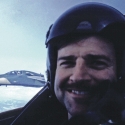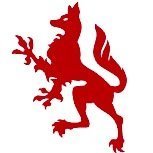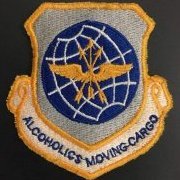-
Content Count
2,002 -
Joined
-
Last visited
About mrvark
-
Rank
Mr Vark

- Birthday 04/18/1950
Contact Methods
-
Website URL
http://
-
ICQ
0
Profile Information
-
Gender
Male
-
Location
Fredericksburg, VA
-
Interests
F-111s, US Aircraft Ordnance from Vietnam to Present
Recent Profile Visitors
16,239 profile views
-
mrvark started following F-111F without pylon?, The AIRES 1/48 B-58 Hustler Exhaust Issue/Debate, FS colours of USAF and NAVY weapons and 4 others
-
Here's the deal: When Monogram designed their kit, I think they got ahold of the attached drawings (they are official drawings that I've copied from Jay Miller's Aerofax book on the B-58). Unfortunately, the drawings did not accurately depict the engine pods. Dave Aungst went to the NMUSAF, measured the pods back in 2009 and actually began to produce masters for Meteor, but ran out of steam for various reasons. What he discovered is that the diameter of the pods are about six scale inches too wide. It's one of those errors that once you've seen it, you can't unsee it... If you are
-
FSN 34087 Olive Drab FSN 36375 Lt Ghost Gray FSN 33538 Yellow (live warhead) FSN 35109 Blue (inert warhead or motor) FSN 30117 Brown (live motor) FSN 36622 Gray (all AGM-88 HARMs but the early ones)
-
Here are a couple of pics that may help a little if you decide to scratch build.
-

Reskit F-111 Tanks - Did someone finally make them the right length?
mrvark replied to IAGeezer's topic in Jet Modeling
According to official references, the F-111 600-gal. tanks were 299 inches long and 30" dia. cylindrical between 103 &196 inches from the nose. Reskit had that information, so I'm sure their tanks are correct. The main purpose of the above photo was to show just how out of scale all the 1:48 scale kit tanks are. I should probably do another to include the Hobby Mess ones. I think the Oz Mod tanks are the same as Scaledown's, but I can't swear to that. In any event, hollow tanks are definitely the way to go. My 'war stories' aren't that interesting--I have a few, but not nearly -

Reskit F-111 Tanks - Did someone finally make them the right length?
mrvark replied to IAGeezer's topic in Jet Modeling
This is a dated photo and DOES NOT include the Reskit tanks. However, it will give you an idea of how undersized the Academy and Monogram (A-10) tanks are. Hobby Boss are no better. Those were BIG tanks! -
The MERs & TERs mounted the shoulder bombs at 45° (so +45°, 90°, -45°). Looking at the assembly tail-on with the fins installed with the normal 'x' orientation, it looks like +x+, keeping the fins from interfering with each other. You'd only get in trouble if you mixed + & x orientation on the same set of bombs.
-
ECM pods were mounted directly behind the gun pod. The original pylon, used with the Vietnam-era AN/ALQ-87 is shown in the drawing. Note that the drawing shows that the back end of the pylons ages down to match the profile of the pod. At some point after the Vietnam War ended that feature was deleted as you can see from the pic taken at the Nat Museum of the USAF as compared to the December 1972 pic (with the Mk 82/Mk 15 Snakeyes mounted in an 'x' configuration).
-
This has turned into an interesting thread! It appears that the mounting protocol changed at some point. Here is a pic taken in Aug. 81 with the Mk 82 conical fins clearly in the 'x' configuration: Here is a pic of a Combat Lancer F-111A with the high drag MAU-91 fin hinges loaded in a '+' configuration (although the fins would appear to be 'x'): When a new weapon is authorized to be employed by an aircraft, it goes through extensive flight testing (in the USAF, it's called 'Seek Eagle'). Why they would choose to do '+' rather than 'x' (much le
-

F-4D 435th TFS/8th TFW Ubon RTAB questions: mystery spine bump?
mrvark replied to F4DPhanv3's topic in Jet Modeling
I'd never seen (or at least noticed) that before, so I asked my friend Alan Howarth about it. His reply: "I have always thought that was a predecessor to the SST-181X Combat Skyspot antenna. I have only seen it on 8th TFW F-4Ds 1968-69ish plus a 49th TFW jet where that must have missed having it taken off." -
The F-111 used TF30 engines, similar to the F-14A. Like the F-14A, the engines were shut down one at a time, which resulted in one nozzle being open and the other closed. The one flaw in the ResKit nozzles is that both are fully open. 😟
-
Spoilers were controlled using the Ground Roll Spoiler Switch (GWSS). At "last chance" just prior to taking the runway, the switch was set to 'BRAKE'. When both throttles were set to idle and the landing gear squat switch sensed 'weight on wheels', the spoilers raised. You could tell when this happened because the spoilers would pop up as the jet sat there at last chance. When they advanced the throttles to take the runway, the spoilers retracted. When they positioned on the runway to do the before takeoff checks, the spoilers would raise up again until the throttles were advanced just prior t
-
I just read the new postings on the other ResKit cockpit thread. The cockpits I have are the original cast resin ones, not the newer 3D printed ones. As an OBTW, I have some of their 1:72 sets for the Hasegawa kits as well. The sidewall decals are thick enough that the fuselage halves won't close. So be prepared to trim the decals and/or sand away from the fuselage plastic and/or resin cockpit tub.
-
Yes, that's Remit 31 at last chance during OEC. Stations 1/8, were never used operationally (a couple of publicity shots aside). Stations 2/7 were only used by FBs for carriage of fuel tanks. 1/2/7/8 were all fixed at 26° for a hi-alt cruise setting (giving the wing tanks a toed-in appearance when the wings were set to the normal takeoff setting of 16°. In the photo, you see the normal 'F-' configuration of swivel pylons 3/4/5/6. Here is a pic of a FB-111A wing with all the pylons removed showing the fixed pylon 2 attach points and the pivot locations for pylons 3/4, along with the flaps down
-
I was around Fs from 1982-7 and never saw one without all four pylons installed. When the 27th TFW F-111Ds participated in SAC's Giant Voice (?) competition in 1988 (?) there was at least one extremely long low level that required use of bomb bay installed 'Tokyo' tanks and removal of the wing pylons to reduce drag, which was the only time I heard of Ds with the pylons removed, but I don't have photos of that. EF-111As normally flew with pylons installed on the outboard (stations 3/6). I have one photo that shows the bottom of the wings that leads me to believe that the inboard station pylon a
-
After seeing a previous thread on this subject several months ago, I dry-fitted my assembled escape capsule into my unfinished F-111A kit. At first, it didn't seem like it would fit at all, but suddenly it popped into place and appeared to me to fit just fine. It MAY be that inserting the cockpit interior will spread the exterior enough that your inserts are unnecessary. I'm only one data point, and my opinion may change after doing a final assembly, but that's my experience so far.





